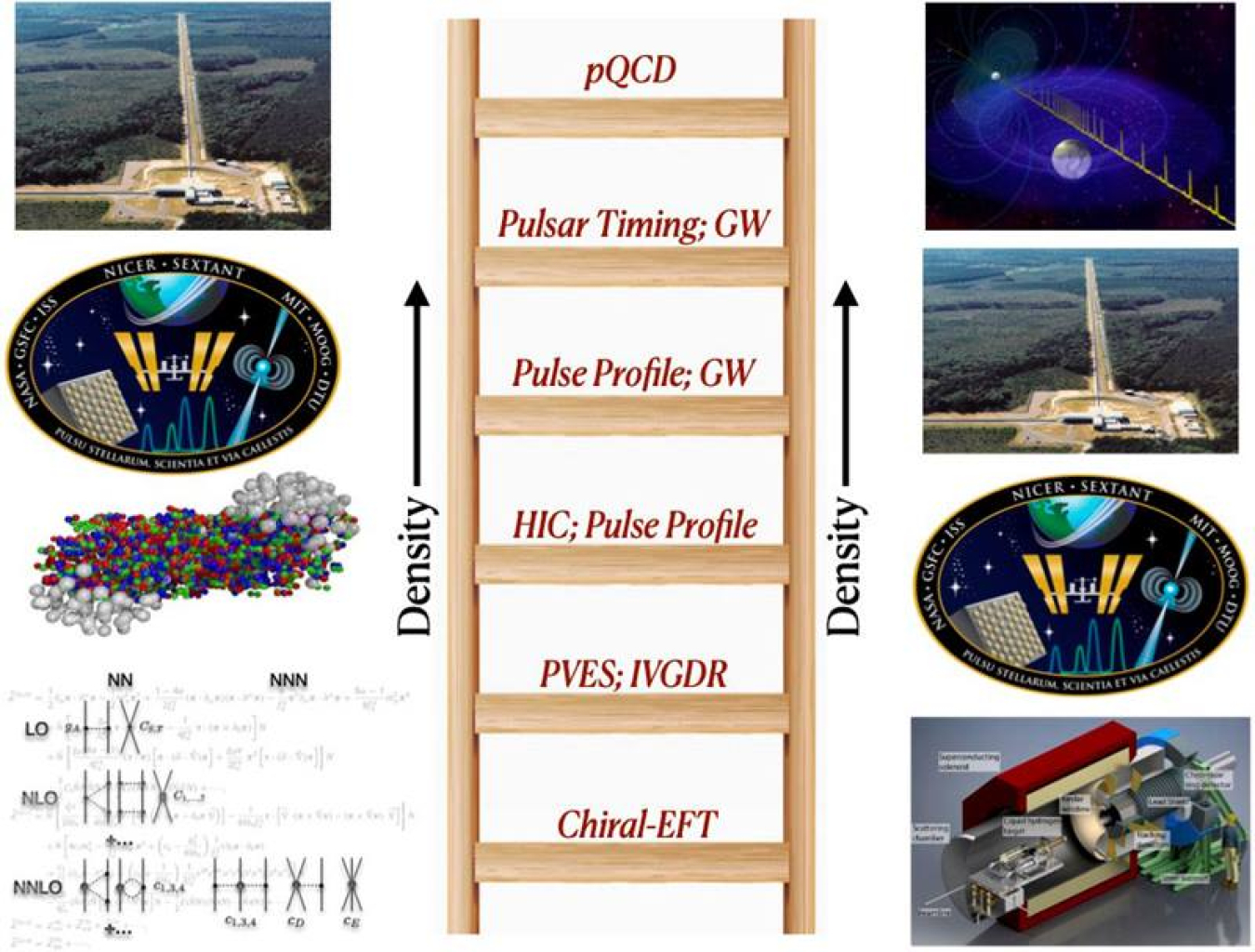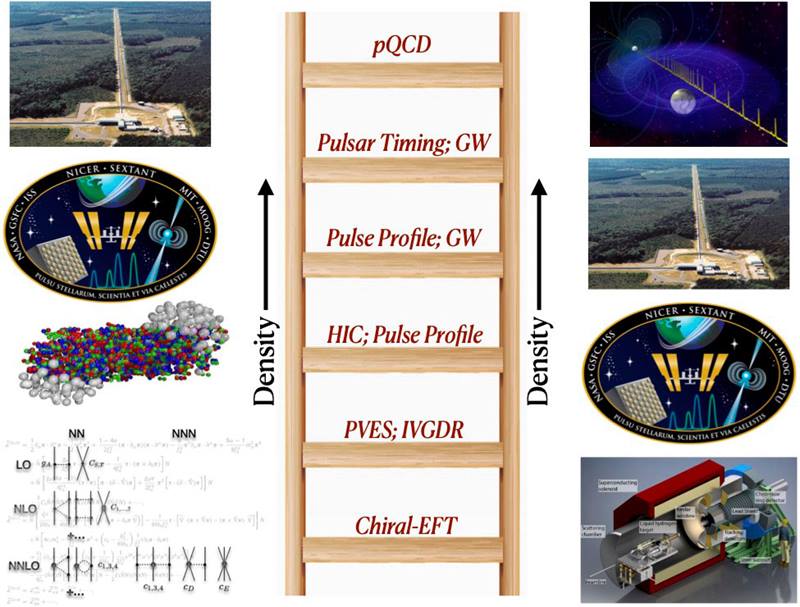
The Science
Neutron star physics has flourished in the past five years thanks to remarkable developments in seemingly disconnected fields. These accomplishments include the historic first detection of gravitational waves from the binary neutron star merger GW170817 by the LIGO-Virgo collaboration. They also include the observation of the most massive neutron star to date at the Green Bank Observatory, and the first simultaneous determination of masses and radii of two neutron stars by NASA’s NICER mission. Also critical was the measurement of the neutron skin thickness of the lead nucleus by the PREX collaboration at the Thomas Jefferson National Accelerator Facility. Researchers are now combining this work to inform the equation of state (EOS) of neutron stars.
The Impact
Recent developments are creating a consistent picture of the exotic structure of neutron star interiors. The neutron skin of the lead nucleus is thicker than was originally anticipated. This suggests that the EOS (how pressure changes with density) is stiff at densities encountered in atomic nuclei (about 100 trillion times water’s density). In order to support neutron stars, which may be twice as massive as the sun with radii of about 12 km, the EOS is also stiff at the highest densities encountered in their cores. However, gravitational wave results favor a softer EOS at densities between those of atomic nuclei and neutron star cores.
Summary
When properly interpreted by theory, the various experiments and observations conducted for decades—but reported within the last five years—provide valuable and complementary information to scientists’ understanding of neutron stars. Each of these techniques probes the EOS at different densities, thereby creating a “density ladder” that aims to connect the various rungs. As of today, scientists have learned about the evolution of the EOS as density increases. This evolution moves from stiff at typical nuclear densities, to soft at slightly higher densities, and ultimately back to stiff at the highest densities encountered in neutron stars. A theoretical study of the implications of all these experiments and observations by researchers from Florida State University, Indiana University, and Manhattan College posits that the softening of the EOS at intermediate densities may be suggestive of a phase transition in the stellar interior, often characterized by dramatic changes in the structure and composition of the system.
Contact
Jorge Piekarewicz
Florida State University
[email protected]
Funding
This work was supported by the Department of Energy Office of Science, Nuclear Physics program.
Publications
Reed, B. T., Fattoyev, F. J., Horowitz, C. J., and Piekarewicz, J., Implications of PREX-2 on the Equation of State of Neutron-Rich Matter. Physical Review Letters 126, 172503 (2021). [DOI: 10.1103/PhysRevLett.126.172503]
Adhikari, D., et al. (PREX Collaboration), Accurately Determination of the Neutron Skin Thickness of 208Pb through Parity-Violating in Electron Scattering. Physical Review Letters 126, 172502 (2021) [DOI: 10.1103/PhysRevLett.126.172502]
Piekarewicz, J., and Fattoyev, F. J., Neutron-rich matter in heaven and on Earth. Physics Today 72, 30 (2019) [DOI: 10.1063/PT.3.4247]
Scraped from https://www.sourcearu.com




